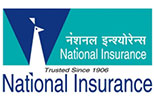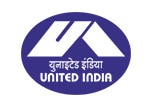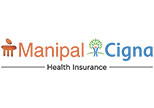Health changes with age — is your insurance keeping up?
You’re in your 60s now, and your health is demanding more attention than ever. The medical bills are rising, and that old health plan you picked decades ago barely covers your needs anymore. What once felt like a safety net now feels like a ticking clock.

And you find yourself thinking, “Why didn’t I upgrade this sooner?” The truth is, many don’t.
Your body isn’t what it was at 40-or even 50-so why should your health insurance stay the same? It’s time to rethink your coverage and ensure it grows with your health needs.
Key Highlights
- Health needs and insurance must change as you age to match growing medical risks.
- Middle age brings chronic illness risks, needing advanced checkups and critical illness protection.
- Seniors need support for dementia, arthritis, hospital stays, and long-term care insurance.
- Review your health plan yearly to avoid gaps and rising costs in medical emergencies.
Table of Contents
How do your health needs and insurance shift as you age?
As your body changes with age, it increases the risk to your health. That’s why you must customize your health insurance plan over time. Here’s what you need, decade by decade.
Your 20s to 30s—Early life
In your early years, you are mostly healthy and don’t face serious health problems. You recover quickly and often don’t need major medical care.
This is because young adults spend less time sitting compared to older age groups, leading to a more active lifestyle. With higher muscle strength and endurance, they are in better physical shape overall. This active lifestyle also keeps chronic diseases like hypertension and diabetes at bay.
What does that mean for your health coverage?
- A health insurance plan with standard coverage is required to meet any eventualities.
- A health plan of as much as 5 lakh is enough to ensure you.
- Ensure flexibility to adjust coverage as needed in the future.
In your 40s and 50s – Middle life
As you enter midlife, health risks rise. High blood pressure, diabetes, heart issues, and critical illnesses like cancer become more common. Nearly 40% of people aged 45-54 suffer from hypertension, with men being more affected than women. Metabolic syndrome, a dangerous mix of high blood pressure, high cholesterol, and obesity, impacts 52% of people aged 40-70. Additionally, nearly 63% of men and 30% of women in India smoke daily, which raises the risk of chronic diseases at this age.
These statistics highlight the importance of regular health checkups. Early detection can help manage conditions like hypertension and diabetes before they get worse.
What does that mean for your health insurance plan?
- You need a more comprehensive plan that covers specialists and diagnostic tests.
- Choose coverage that supports regular screenings like blood work, mammograms, and heart health.
- If you develop a condition, look for plans with disease-specific benefits or care programs.
- Ensure your plan includes coverage for long-term medications and outpatient care.
- Prefer a senior citizen health insurance or add a critical illness rider to your policy.
- A health insurance plan of up to 15 lakh coverage is decent enough for you.
Check Also:
- Aditya Birla Health Insurance Plans
- HDFC Ergo Health Insurance Plans
- ICICI Lombard Health Insurance Plans
In your 60s and beyond
As you enter your senior years, health needs grow. Conditions like arthritis, memory loss, and reduced mobility become more common. In India, approximately 7.4% of people aged 60 and above suffer from dementia, affecting about 8.8 million individuals. The condition is more prevalent among women (9%) compared to men (5.8%).
Arthritis also impacts many older adults. Around 19.7% of seniors in India have bone and joint diseases, with women being more affected. Mobility issues often lead to falls, which are common in seniors. About 12.6% of older adults reported experiencing a fall in the last two years, often linked to arthritis and joint problems. So, as you age, more frequent doctor visits, tests, and hospital stays become part of your routine.
What does that mean for your coverage?
- Explore Medicare Advantage or Supplement Plans to cover gaps in dental, vision, or prescriptions.
- Choose plans that support regular doctor visits, hospital stays, rehab, and home care.
- Pick a plan that includes memory care support for conditions like dementia. Ensure it also covers arthritis treatment, physiotherapy, and joint care.
- Make sure your coverage includes support for chronic disease management and specialist care.
- Don’t skip protection against serious diseases - go for a senior citizen health insurance plan or add a rider for it.
- A health coverage of minimum 15 lakh or above is recommended
Check This Too:
Are you due for a policy upgrade?
Here are the major life events that should trigger a review of health insurance plans:
- Changing Income Level: Your ability to pay for insurance may change when your income changes (increases/decreases).
- Being Diagnosed with A Serious Illness: A major illness means more doctor visits, tests, or treatments.
- Getting Married or Divorced: Your coverage needs may change when you add or remove a partner.
- Retirement or Early Retirement: When you stop working, your employer may stop offering coverage.
- Having or Adopting A Child: A new child means more doctor visits, vaccines, and care.
The invisible cost of outdated coverage: A real-life case
Rinki Sudhar, a 24-year-old from Uttar Pradesh, suffered from rheumatic heart disease for 10 years. Her illness caused breathlessness, sleepless nights, and constant coughing. Despite visiting many hospitals, doctors failed to give her the right diagnosis. Finally, a scan in Sultanpur revealed her condition. She was referred to a hospital in Kanpur, but faced long waiting times. Her family then rushed to Mumbai for urgent care.
She had the Ayushman Bharat health insurance plan with Rs. 5 lakhs coverage. But it didn’t cover her full treatment. The cost of the balloon catheter alone was Rs 50,000, which insurance didn’t pay. A doctor at Sion Hospital found a kind donor who covered the full cost. Without this help, she would not have survived.
Her family, already poor, faced deep financial stress. The emotional burden was just as heavy. Her story shows how outdated coverage can break families, financially and emotionally, when they need help the most.
So, that scenario you imagined at the start of this article can come true. It is therefore important to stay one step ahead. Review your coverage often, upgrade when needed, and protect your future self.



















































